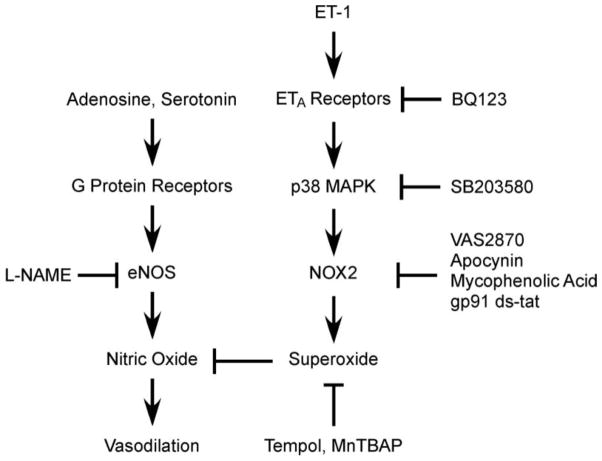Figure 7.
The diagram shows the proposed signaling pathway exerting the adverse effect of ET-1 on endothelium-dependent, nitric oxide-mediated vasodilation. The bioavailability of nitric oxide, following activation of eNOS by G protein-coupled adenosine and serotonin receptors, is reduced by the elevated level of superoxide in the vascular wall. A sub-vasomotor level of ET-1 (10 pmol/L) activates NOX2 for superoxide production through ETA receptor-dependent p38 MAPK activation and consequently compromises vasodilation to nitric oxide. Alleviating the overproduction of superoxide by agents that inhibit the activation of ETA receptors, p38 MAPK and NOX2 or that reduce superoxide level directly protects the vascular insult from ET-1.

